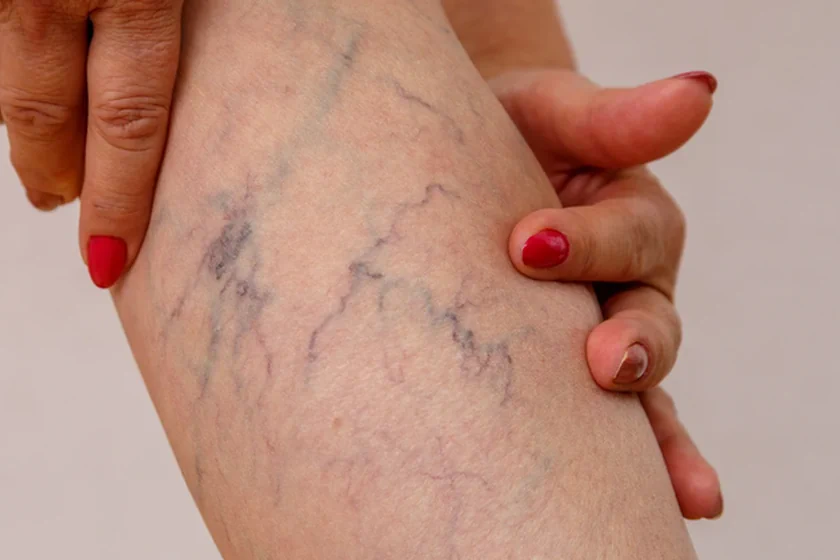
Have you ever found yourself wondering why your veins suddenly seem more prominent than before? It’s a common occurrence that often leaves individuals puzzled and seeking answers.
In fact, studies show that approximately 30% of adults experience increased visibility of veins at some point in their lives, prompting questions about underlying causes and potential health implications.
In this exploration, we delve into the mystery behind this phenomenon, uncovering the factors that contribute to the sudden prominence of veins and shedding light on its significance for overall health and well-being.
Common Causes of Visible Veins
Visible veins can often be a surprising and concerning phenomenon, leading individuals to wonder about their underlying causes and potential health implications. Understanding the common factors contributing to visible veins is essential for recognizing when it’s merely a benign occurrence or a sign of an underlying health issue.
Age-related changes are one of the primary causes of visible veins. As we age, our skin loses elasticity and becomes thinner, making veins more apparent beneath the surface. Additionally, the natural wear and tear on the veins over time can lead to weakened valves, contributing to their visibility.
Regular exercise and muscle strain can also result in visible veins, particularly in areas where muscles are well-developed. When muscles are engaged during physical activity, they require increased oxygen and nutrients, leading to greater blood flow through the veins. This heightened blood flow can cause veins to appear more prominent, especially in individuals with lower body fat.
Weight loss or having a low body fat percentage can exacerbate the visibility of veins. As fat stores decrease, veins become more visible beneath the skin’s surface. This effect is particularly noticeable in areas where fat is naturally distributed, such as the arms, legs, and abdomen.
Issues with blood circulation can also contribute to sudden vein visibility. Conditions such as peripheral artery disease (PAD) ,and deep vein thrombosis (DVT) and AV fistula can affect blood flow through the veins, leading to visible bulging or discoloration. Recognizing the signs of these conditions, such as leg pain, swelling, or skin changes, is crucial for prompt diagnosis and treatment.
Health Conditions Related to Visible Veins
Visible veins can serve as indicators of various health conditions, ranging from relatively benign issues to more serious vascular disorders. Understanding the relationship between visible veins and these health conditions is crucial for early detection and appropriate management.
Varicose Veins
One common condition associated with visible veins is varicose veins. Varicose veins are enlarged, twisted veins that typically occur in the legs and are often accompanied by symptoms such as achiness, heaviness, and swelling.
The underlying cause of varicose veins is faulty valves within the veins, which leads to blood pooling and increased pressure within the affected veins. This increased pressure causes the veins to become enlarged and visibly bulge beneath the skin’s surface.
Deep Vein Thrombosis
Another condition linked to visible veins is deep vein thrombosis (DVT). DVT occurs when a blood clot forms in a deep vein, usually in the legs.
While not all cases of DVT result in visible veins, some individuals may notice swelling, warmth, and discoloration in the affected leg. If left untreated, DVT can lead to serious complications such as pulmonary embolism, making early detection and treatment essential.
Peripheral Artery Disease
Peripheral artery disease (PAD) is rarely associated with visible veins, albeit indirectly. PAD is a condition characterized by narrowed arteries in the legs, which reduces blood flow to the extremities.
In response to decreased blood flow, the body may attempt to compensate by dilating superficial veins to improve circulation. This dilation can result in visible veins, particularly in individuals with advanced PAD. Symptoms of PAD include leg pain, cramping, and numbness, especially during physical activity.
When to Seek Medical Advice
Seek medical advice if you experience persistent or severe pain, swelling, changes in skin appearance, new or worsening symptoms, have risk factors for vascular disease, or have concerns about the cosmetic appearance of visible veins. Early intervention can prevent potential complications and ensure proper management of your vascular health.
Prevention and Management of Sudden Vein Visibility
Prevention and management of visible veins involve several key strategies:
- Healthy Lifestyle: Maintain a balanced diet, engage in regular physical activity, and avoid prolonged periods of sitting or standing to promote good circulation and prevent vein-related issues.
- Weight Management: Maintain a healthy weight to reduce pressure on the veins and lower the risk of developing varicose veins or other vascular conditions.
- Compression Therapy: Consider using compression stockings or socks to improve circulation and reduce swelling in the legs, particularly if you have a history of vein-related problems or spend long hours on your feet.
- Elevate Legs: Elevating your legs above heart level when resting can help reduce swelling and improve venous return, especially after prolonged periods of standing or sitting.
- Avoid Tight Clothing: Avoid wearing tight clothing, especially around the waist, groin, or legs, as this can restrict blood flow and contribute to the development of visible veins.
- Stay Hydrated: Drink plenty of water throughout the day to maintain adequate hydration levels, which can help support healthy blood circulation.
- Regular Exercise: Incorporate regular aerobic exercise into your routine to strengthen the muscles and improve overall cardiovascular health, which can help prevent conditions like peripheral artery disease (PAD).
Also read – Best Workouts for blood Circulation - Medical Consultation: Consult a healthcare professional if you have concerns about visible veins or experience symptoms such as pain, swelling, or skin changes. They can provide personalized advice, recommend appropriate treatments, and monitor your vascular health as needed.
FAQs About Sudden Vein Visibility
No, veins may be visible in normal people especially in hands and feet or ankles. But when they veins become larger and tortuous due to incompetent valves within them, they are called as varicose veins.
No, varicose veins may not always be visible. They can vary in visibility depending on factors like size, location, and skin tone.
Sudden visibility of veins can be due to factors like aging, weight loss, exercise, or hormonal changes, which affect skin thickness and blood flow.
You can conceal varicose veins with clothing, such as long pants or skirts, or by using makeup designed to camouflage discoloration on the skin.
Varicose veins may not disappear completely without treatment, but symptoms can often be managed with lifestyle changes, compression stockings, or medical interventions.
Conclusion
Visible veins can vary in visibility and may indicate underlying health conditions such as varicose veins or circulation problems. While often harmless, sudden changes or symptoms like pain or swelling should prompt medical attention for proper evaluation and management, ensuring overall vascular health and well-being.
Also read – Leg Vascular Diseases Guide & Treatment Option
Dr. Sumit Kapadia, a highly skilled vascular surgeon, offers personalized care and advanced treatments for visible veins. With expertise in minimally invasive and surgical procedures, he addresses both cosmetic concerns and underlying vascular issues effectively, ensuring optimal outcomes and enhancing overall well-being.

MBBS, MS, MRCS, DNB-Fellow
Dr. Sumit Kapadia
Dr. Sumit Kapadia / MR KAPADIA SUMIT a gold-medalist from Baroda Medical College, obtained his general surgical training and senior residency from SSG Hospital, Vadodara.

MBBS, MS, MRCS, DNB-Fellow
Dr. Sumit Kapadia
Dr. Sumit Kapadia / MR KAPADIA SUMIT a gold-medalist from Baroda Medical College, obtained his general surgical training and senior residency from SSG Hospital, Vadodara.



